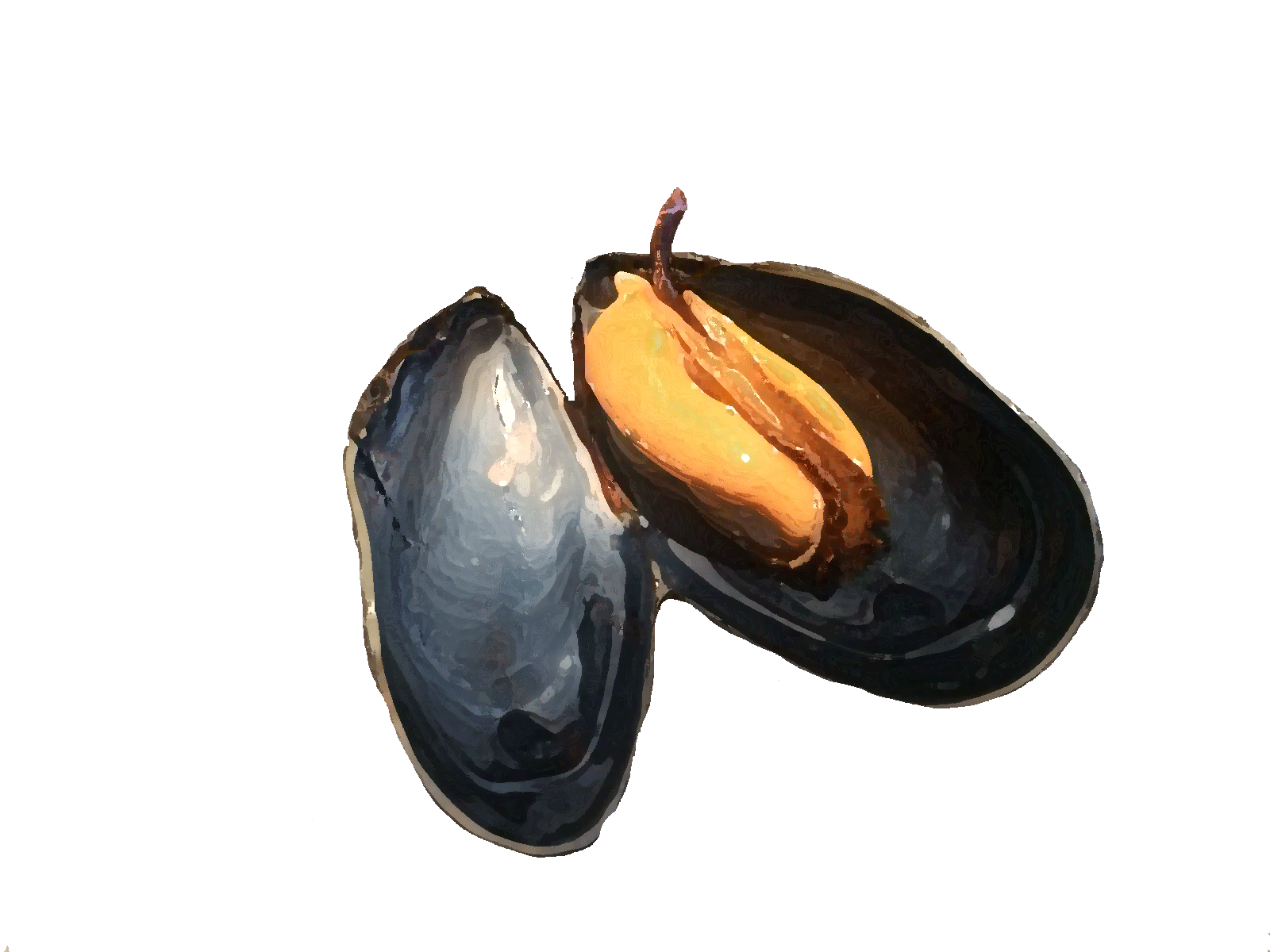A mussel larva does not yet have the same digestive system as those that have already found a place on a hard substrate. Mussel larvae swim through the water where a kind of membrane with vibrating hairs called a velum traps food particles from the water. As the larva grows larger, the velum disappears and a foot develops. The larva can then no longer swim and sinks to the bottom. Using the foot, the whole young mussel can move forward and look for suitable place to attach itself using byssus threads, also called the beard of the mussel. Within 1 to 3 days after the creation of byssus threads, the oral flaps and gill lamellae develop. From then on, the mussel has a different digestive mechanism. It is then possible to filter water and actively ingest food. During metamorphosis, the larva cannot eat and therefore must rely on reserves. Mortality during metamorphosis can be very high, possibly 99% of total larvae. The mouth flaps allow a mussel to transport food entering the shell through the gills. A row of comb-like gill lamellae, also called ctenidia, form the respiratory organ but at the same time also actively draw in food. This is because the cilia on the gills create an influx of water. Other cilia sift the water. The passage space between these vibrating hairs can be adjusted, making the size of the particles that are passed variable. Because seston consists not only of edible algae, but also of dead organic and inorganic components, much non- or poorly digestible material is also collected during filtration. Trapped and retained particles are transported to the labial palps. Here, particles are either rejected or directed further to the mouth. At the mouth patches are selected again. The edible particles are digested by the mussel and the inedible particles are formed into small pellets using mucus. The pellets are excreted along the jacket edge through the inflow opening. This excreted material is called pseudofaeces. The particles that do get absorbed by the mouthparts enter the intestines and are digested there. The digested parts are ejected as feces. Mussels may produce two types of feces, depending on the route the food has taken. When there is little suitable food in the water, the particles pass through the digestive gland and faeces consists of highly digested material. When a lot of edible material passes, this does not happen and the particles are digested worse. It is still unclear whether mussels can already consciously select in their stomachs which type of particles go through the digestive gland and which particles do not. Thus, food particles are ultimately selected in three different places, namely at the gills, at the mouthparts and in the intestines.
Add A Comment

